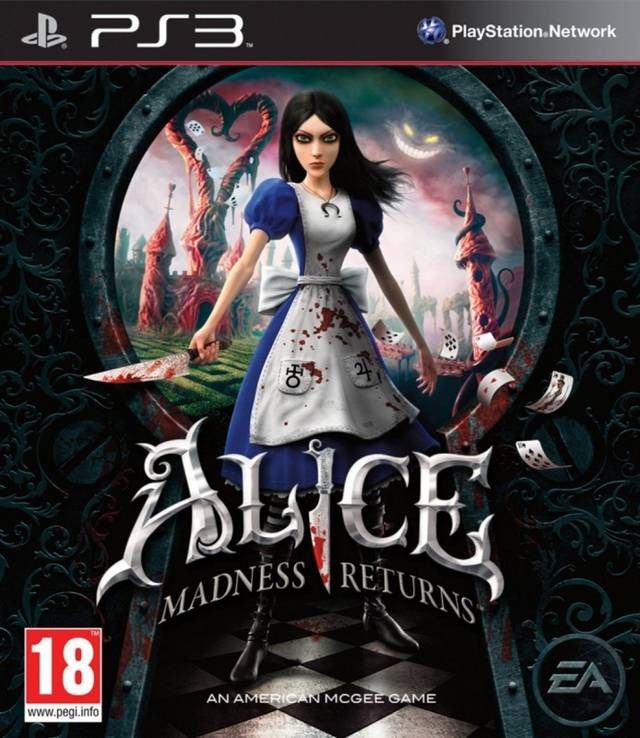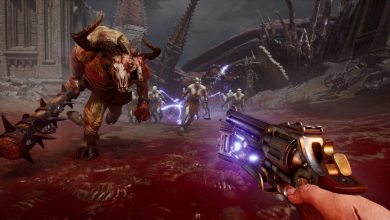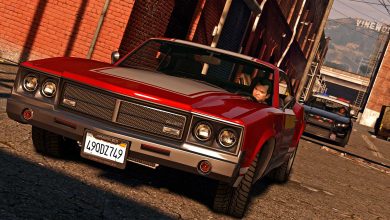Let’s be honest. American McGee hasn’t really set the gaming world ablaze with any of his solo projects since departing Id Software. But although he hasn’t attained that exacting degree of critical and commercial success needed to break into the mainstream, he’s managed to stay relevant enough in an industry that so often devours its own. So what does he-with-the-odd-name know that the others don’t? Far from being cryptic, the answer should be obvious enough to anyone with some familiarity with McGee’s previous output. The one common thread that defines his games, whether they may be the original Alice, Scrapland or Bad Day L.A., is that they refuse to be tailor-made to suit a particular market or demographic. The man damn well makes what he pleases, so it’s a good thing for everyone concerned that he’s got the taste and production foresight to back his visions up. They may not always play the best, but McGee has that Suda51-esque knack of making up for gameplay deficiencies with sheer strength of artistry and character.

There’s an uncanny similarity between Alice’s schizophrenic dalliances within an imaginary other-world and how receptive an audience needs to be to actually get Alice: Madness Returns. Much like the human mind and its random complexities, you’ll be justly rewarded for putting up enough patience and gumption to delve into its darkened recesses. Madness Returns picks up right where the first game left off, with Alice released from Rutledge Asylum, but not entirely cured of her guilt and torment from having survived a fire that claimed the lives of the rest of her immediate family. Now the resident of a dreadfully morose orphanage (are orphanages anything but?), you begin the game running a seemingly innocuous errand that quickly turns into a free-fall down the wrong end of the sanity pipe works (pro tip: don’t follow cats). Saying anymore would ruin the story, which is nuanced and layered enough to make you want to see it through.
Moving from the decade-old first game to the sequel isn’t nearly as much of a culture shock as you may think. We’re still firmly in traditional platformer territory (albeit a lot darker and moodier than Rayman), and much credit to McGee for not trying to shoe-horn the premise into a genre that wouldn’t fit it. The game is broken up into a series of chapters, six in all, interspersed by visits to real world London town. While six chapters may not sound like much, rest assured that you’ll be clocking multiple hours into each. The sections set in contemporary London are just long enough to give you some much-earned breathing room between chapters, and also to set up some of the story.
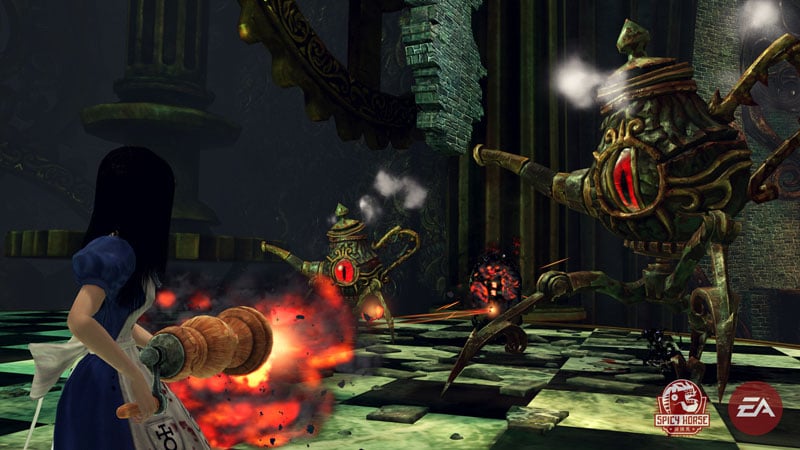
Madness Returns rewards observation. For instance, you’ll soon notice that the worlds that make up wonderland have an eerie parallel to Alice’s life. You’ll see Meiji-era environs and enemies soon after coming across Japanese memorabilia in a certain someone’s house in the real world. The chapters are all thematically varied and your time in each is broken up into chunks of platforming, combat and other one-off gameplay elements. These one-offs are quite inventive, with block puzzles, miniature chess, and even 2D levels thrown into the mix. McGee’s team seems to have cracked the holy grail of level design as the likelihood of you nodding off mid-level is next to nil. There’s always something new to see, a new platforming section to traverse, or a new set of enemies to fight. None of these would have made much of a difference if the gameplay didn’t hold up. Thankfully, Alice is nimble on her feet; nimble enough that you’ll only blame yourself for a misjudged jump. And while she may be missing a few frames of transitionary animations, I’d much rather have these levels of swift and precise movement as a trade-off. The camera is mostly well behaved, and there is a perfectly functional lock-on system in place if you require it.
You also have the ability to chain jumps together (up to three) as well as float downward if you hold the jump button. As with most games, there will be a couple of instances where the camera swings to an ungodly angle for no reason whatsoever. Nothing to fret over though, especially not when it’s well behaved otherwise. Combat is also handled well. You’re given a small set of upgradeable weapons mapped to your controller’s face buttons that you can then hot swap in the middle of combat to create combos. The vorpal blade makes a return from the first game, ably joined by a hobby horse heavy weapon, a timed explosive rabbit, a pepper grinder Gatling gun, a tea-pot cannon, and an umbrella that deflects projectiles. I did miss the ability to perform air to ground attacks and juggle enemies, but it isn’t something that hurts the game.
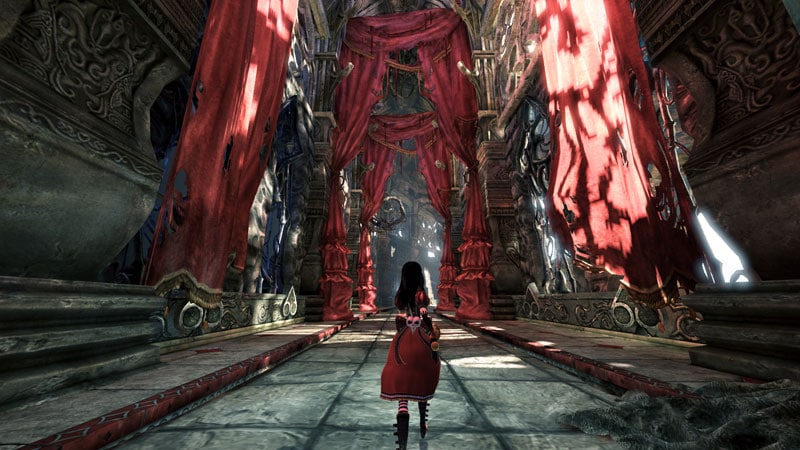
The enemies you’ll be fighting vary with the world you’re in and each requires a different strategy to defeat, which in turns makes clever use of your arsenal. You’ll be switching between weapons on-the-fly as well as using the dodge ability that looks borrowed straight out of Bayonetta. You can toggle ‘hysteria mode’ when you’ve taken enough damage, which then lets you kill enemies with ease without taking any more damage. What using the mode does take away are the teeth (the game’s collectible currency) that enemies drop, thereby slowing your weapon upgrade cycle down.
Wonderland looks stunning enough to make Tim Burton’s big screen version of it look inadequate by comparison. Familiar characters from Lewis Carrol’s seminal book make a return, including a wonderfully realised Cheshire cat, who serves as a guide through your adventure. Also of special note are Alice’s hair physics and the costume designs. The characters (children included) that populate her real world haunts also have a macabre look about them, making environments look doubly intimidating. The levels are simple in geometry, but attempt to compensate for it by piling on oodles of satisfyingly imaginative artwork (steampunk, anyone?). Textures also tend to be quite low-res and blurry, which is a shame when the art is this good. Cutscenes, while being well produced, suffer from unseemly loads that have Alice frozen on screen before and after cutscenes.

Nevertheless, there’s a genuine sense of satisfaction and wonder to be found, ably supported by an extremely evocative score by an individual I should already have looked up by now (mental note). Voice acting is pleasingly period English and quite colourful to boot. Some of the banter does come off a tad wooden though. There are also memories that you can collect throughout the game that give you more insight into the overall narrative. You’re also given a redemption code that lets you download an HD update of the first game. Those who missed out on it back in the day may want to give it a go, but be forewarned that the legacy controls may take some getting used to. Your humble reviewer was unfortunately unable to relive such long repressed memories owing to the redeemable code being absent from his review copy.
Conclusion
So, is Alice a keeper? Absolutely. Not only do you not see nuanced games such as Madness Returns often enough, but there may also not currently be a better stand out than this to breathe some life into the platforming genre (on platforms not called Nintendo). While this may be fated to be a lesser known cult classic like American McGee’s other games, it deserves so much more. Buy it already.
